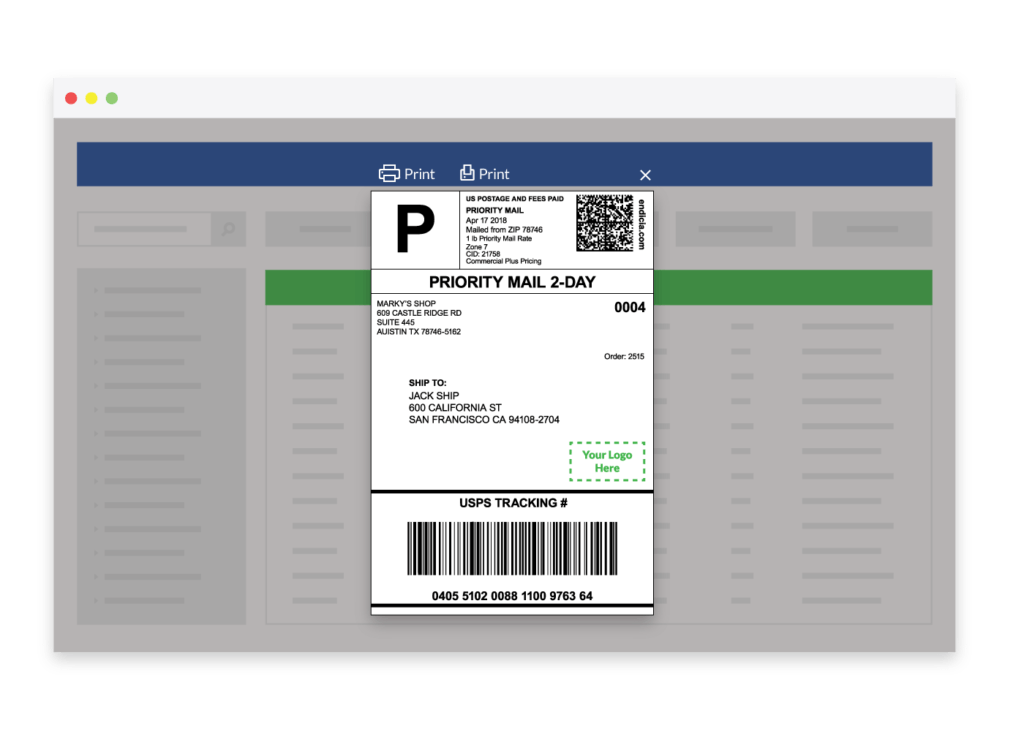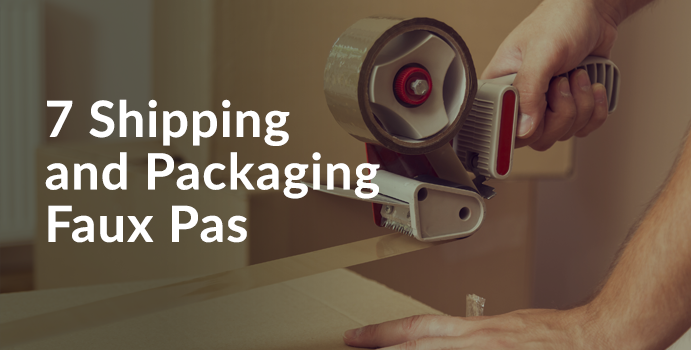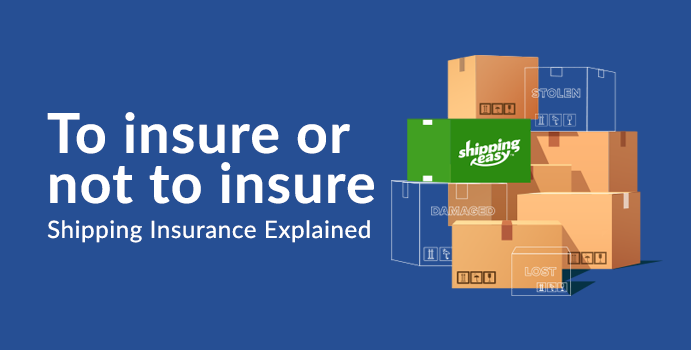This guest article comes to us courtesy of Blanco Labels
You or your manufacturer spent a lot of time designing, producing and testing your product, and the last thing you want is for it to become lost or damaged in transit. Even the best-laid plans can fall to pieces when shipping woes enter the picture, triggering unhappy customers, lost revenue, and a complicated, tangled web of returns. In short, avoiding these issues is good for your bottom line and brings you and your customer peace of mind.
In an ever-growing e-commerce world, there’s only one way to ship: you must develop a strategy that’s efficient, secure, protective, and insured. Oh, and you have to do it all in a way that’s affordable to the consumer. For extra bonus points, focus on making the shipping experience, well, an experience for a more satisfied (and impressed) customer base. You can achieve all of these goals by avoiding these common packaging and shipping faux pas.
1. Choosing the Wrong Label
One of the most important components of fast, reliable shipping is the labeling process. A shipping label that doesn’t fit properly or is prone to damage in the transit journey will only result in delays and delivery mistakes. So, how do you make sure you’ve got the right-sized label? You must be able to alter the label to fit the packaging. For example, use general-purpose mailing labels on your flat-rate envelopes and sheeted labels for large, corrugated boxes. In other words, you don’t want to use a small label on a big box and a big label on a small box. These oft-overlooked factors ensure that your packages get where they’re supposed to go without any bumps in the road, so to speak.

2. Skipping the Inspection
There’s so little time in the day, who has time to inspect packages before they go out the door? The thing is, taking a few extra seconds to check that all of the labeling is correct can seriously help you cut back on packages sent to the wrong address. If you send out large quantities of goods, it’s not a bad idea to build package inspections into your process; Many major logistics companies and distribution centers have dedicated inspectors for this very reason.
3. Picking the Wrong-Sized Box
Last year, the world’s biggest online marketplace—we’re talking about Amazon, of course—announced that it would be spending some time figuring out how to cut down on shipments with half-empty boxes. Their solution? Use more envelopes and more technology. Picking the wrong-sized box not only means wasted revenue—bigger boxes cost more money and improper packaging means greater risk for damage—it also means unhappy customers. Amazon said one of its biggest reasons for cutting down too-big boxes was because consumers have concerns about the environmental impact of using too much cardboard. Spend some extra time testing box sizes before committing to one.
4. Skimping on Quality
Of course, one of the most important things about packaging and shipping is making sure that your goods get to their expected destination in one piece. You simply can’t risk a consumer receiving a broken item because you’ll not only be out the cost of the product, but also the cost of transport and the cost of replacing said item. To avoid this, eliminate any low-quality shipping materials and perform a little bit of testing before you commit to a certain packaging order. Where possible, prioritize protective packaging when you’re mailing delicate goods. There’s a much lower likelihood of fragile items showing up broken or cracked when you use high-quality bubble mailers, packing peanuts and other quality padding supplies.
5. Mislabeling Packages
Every company will, from time to time, accidentally mislabel a package. The most common mistake happens with address labeling specifically, which often occurs when the consumer types in the wrong zip code. But there are several surefire ways to correct this common faux pas and ensure that your shipping label printers always pump out the correct address. Many of the biggest e-commerce platforms now implement address validation tools (or plug-ins and extensions if you’re using an open-source platform like Magento) that validate a customers’ address and make sure that it’s right before the user even submits their order. Often times, these tools are created using Google Maps autocomplete, so the consumer can select the proper address from a Google Maps populated form. This can significantly cut down on user errors that hold up the shipping process. A shipping app like ShippingEasy also provides address validation to help ensure package deliverability.
6. Skipping the Insurance and Tracking
The benefits of adding insurance to all of your business shipments are obvious. It protects your company from major revenue losses if items are lost, stolen or damaged in transit. Some shipment methods have insurance built in, up to a certain amount, but others don’t. That’s why ShippingEasy makes it simple to add insurance to packages, right from within the platform. For more on whether you should insure packages or not, click the image below. But what about offering your consumers tracking information? Indeed, there are some measurable benefits to that, too. Providing tracking information reduces costly calls and customer service inquiries about when a package will arrive, encourages visitors to return to and spend more time on your website (which may mean more sales) and provides customers with plain-old peace of mind. Correct this faux pas by integrating tracking information onto your website and sending updates via e-mail as they become available.
7. Not Focusing on the Unboxing Experience
Don’t get us wrong: while reducing costs and protecting your shipped goods are the principal factors of a good shipping strategy, there’s also some evidence to suggest that creating an unboxing experience—making the opening of the package an experience in and of itself—can equal greater sales. Why? For one, a recent survey showed that over half of all consumers were more likely to make repeat purchases from merchants that delivered premium packaging. Secondly, products shipped with interesting or premium packaging were more likely to get shared via social media, which means free advertising for you. Up your shipping game to prevent bland packaging with branded boxes, decorative fillers and eye-catching envelopes. Check out subscription-based brands Ipsy or Trunk Club for some inspiration. Both of these companies are known for their unique unboxing experiences.
Rob Zaleski
Latest posts by Rob Zaleski (see all)
- USPS 2023 Shipping Rate Changes - November 16, 2023

